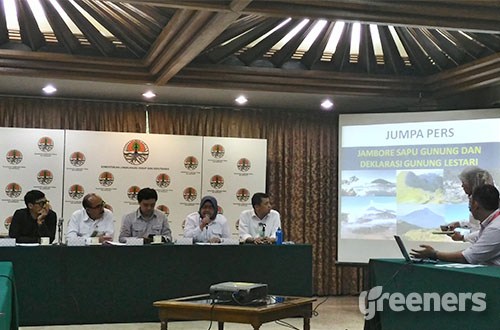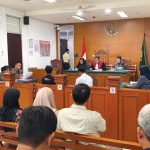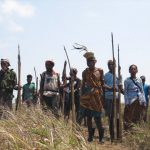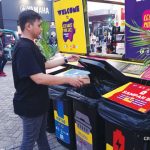Jakarta (Greeners) – A recent survey conducted by Sapu Gunung Indonesia Community, Ministry of Environment and Forestry, and nature lover students revealed nearly 500 tons of garbage produced by at least 150,000 climbers in ten mountains per year.
The survey was conducted in ten Mountain National Parks and five mountains from 11 to 24 April which resulted 435 tons garbage from 150,688 climbers per year or three kilograms of waste for each visitor.
The 15 locations are Kerinci Seblat National Park, Rinjani Mountain National Park, Gede Pangrango National Park, Merbabu Mountain National Park, Merapi Mountain National Park, Sindoro Mountain, Argopuro Mountain, Prau Mountain, Ciremai Mountain National Park, Bromo Tengger Semeru Mountain National Park, Halimun Salak National Park, Sumbing Mountain, Papandayan Mountain, Bawakaraeng Mountain and Halau Halau Mountain.
From 15 locations, results of eight areas, — Kerinci Seblat National Park, Rinjani Mountain National Park, Gede Pangrango National Park, Merbabu National Park, Merapi Mountain National Park, Sindoro Mountain, Argopuro Mountain and Prau Mountain — were already finalized.
The survey is part of Indonesia’s ‘Sapu Gunung’ Jamboree initiated by Greeners.co with Ministry of Environment and Forestry, Sapu Gunung Indonesia Community, and nature lover students.
Director of Waste Management, Toxic and Hazardous Substance at Ministry of Environment and Forestry, Tuti Hendrawati Mintarsih, said that 53 percent or 250 tons of waste was non-degradable plastic waste polluting national parks permanently.
“The survey depicted waste issue is a problem as it is related to national parks’ function as clean tourism destination and conservation,” said Tuti in Jakarta, on Wednesday (27/4).
She cited Rinjani Mountain National Park visited by 36,500 visitors per year resulted to 160.24 tons of waste and considered as the highest waste volume from the survey.
Oneng Setyaharini, assistant deputy for Destination Management and People Empowerment of Tourism Ministry, said that waste issues in touristic areas, including national parks need to be tackled.
Based on 2014 Tourism Competitiveness Index, Oneng said Indonesia ranked 135 from 141 for its environment sustainability.
Oneng said environment index in national parks was low, hence, it needed cooperation from all stakeholders to deal with the issue. Ministry of Tourism, Oneng added, was concerned about cleanliness in touristic sites in the country.
“There’s tourism destination management in our ministry. We have implemented the program in Rinjani for five years but still couldn’t solve the problem. Maybe it’s lack of coordination and synergy between ministries,” she said.
Coordinator of Sapu Gunung and editor in chief of Greeners.co, Syaiful Rochman, said that efforts to reduce and manage waste have not been much for mountains. Hence, it would need inventory and monitoring waste volume and waste management in national parks.
Interesting facts from the survey, he added, was waste bins availability at national parks and mountains which instead made climbers throw their wastes in the bins rather than brought them down.
“If waste bin located five kilometers from climbing posts, national park management would be overwhelmed. It would require lots of people and resources to carry those waste. So, don’t put waste bins inside the area,” he said.
The Sapu Gunung Jamboree will be attended by 1,000 nature lovers out of 300 communities and outdoor communities which will be launched on April 30.
The event will also present Sustainable Mountain Declaration and Nature Lover Ethical Code held in Ranu Pani camping site of Semeru Mountain, Bromo Tengger Semeru National Park.
The ethical code was already initiated by nature lover students during their first summit, Gladian Nasional Pecinta Alam IV, in 1974.
“They decided that there should be ethical guidance for nature lovers, so, they formulated the ethical code in Ujung Pandang, in 1974. We are planning to read it back to remind young climbers to become true nature lovers,” he added.
Reports by Danny Kosasih



















































